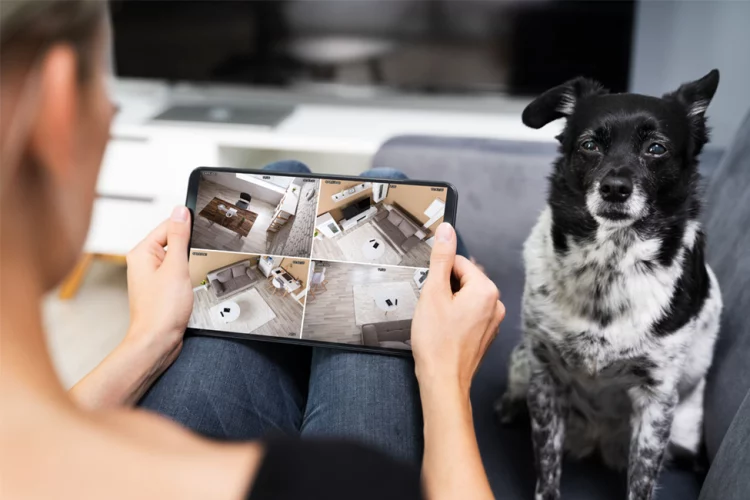Destructive behavior in pets, whether it’s chewing furniture, digging holes, or scratching the walls, can be frustrating for pet owners. While these behaviors are natural to some extent, they can lead to significant damage if not addressed properly. Understanding why your pet engages in destructive behavior and how to manage it effectively is essential for maintaining a harmonious household. This guide will provide practical tips on how to correct destructive behavior in pets and create a healthier environment for both you and your furry companion.
1. Understand the Cause of Destructive Behavior
Before you can correct destructive behavior, it’s important to understand why your pet is behaving in this way. Destructive behavior often stems from a variety of causes, and identifying the root cause is essential for effective intervention.
a. Boredom and Lack of Stimulation
Pets, especially dogs and cats, need mental and physical stimulation to stay content. Without enough exercise, play, or interaction, pets may resort to destructive behaviors as a way to entertain themselves.
- Dogs: Dogs, especially high-energy breeds, require daily physical exercise and mental stimulation. If they are not given enough activity, they may chew on furniture, shoes, or household items to pass the time.
- Cats: Cats, particularly those that are kept indoors, may scratch furniture or claw at objects due to a lack of play or a way to mark their territory.
b. Anxiety or Stress
Pets may exhibit destructive behavior when they are anxious or stressed. This could be due to separation anxiety, changes in the environment, unfamiliar people or pets, or loud noises.
- Separation Anxiety: Some pets become distressed when left alone, leading to behaviors like chewing, scratching, or urinating indoors.
- Environmental Stress: A change in routine, new surroundings, or a stressful experience can trigger destructive behavior in both dogs and cats.
c. Lack of Training or Discipline
Pets that haven’t been properly trained may engage in destructive behavior because they don’t understand what is acceptable. Puppies and kittens, in particular, are still learning how to interact with their environment.
d. Medical Issues
Sometimes, destructive behavior is a sign of underlying medical issues, such as dental problems, gastrointestinal discomfort, or even neurological conditions. If your pet’s destructive behavior seems unusual or excessive, a visit to the vet may be necessary.
2. Provide Enough Exercise and Mental Stimulation
One of the most effective ways to prevent and correct destructive behavior is by making sure your pet gets enough exercise and mental stimulation. Pets that are not mentally or physically challenged often engage in behaviors like chewing, scratching, or digging to relieve boredom.
a. Daily Exercise Routine
Make sure to provide your dog with at least 30 to 60 minutes of physical exercise each day. Activities like walking, running, fetch, or swimming can help burn off excess energy and reduce the likelihood of destructive behavior.
- Interactive Play: Play games that require mental engagement, such as hide-and-seek or puzzle toys, which provide both physical and cognitive stimulation.
- Training Sessions: Incorporating short, positive training sessions during the day can also mentally stimulate your pet while strengthening your bond.
b. Enrichment Activities
Cats need mental stimulation as much as dogs. Providing your cat with toys that mimic hunting, such as laser pointers, feather wands, or interactive puzzle feeders, can help reduce destructive scratching and clawing.
- Scratching Posts: Ensure that your cat has access to scratching posts or pads. Cats have an instinctual need to scratch, and providing appropriate outlets can save your furniture from damage.
3. Address Anxiety and Stress
If your pet’s destructive behavior is linked to anxiety or stress, it’s crucial to address these underlying emotional factors. Pets may engage in destructive behaviors as a way to cope with feelings of fear, anxiety, or loneliness.
a. Desensitize Your Pet to Triggers
If your pet has separation anxiety, consider gradually desensitizing them to being left alone. Start by leaving your pet alone for short periods and gradually increase the duration. Always remain calm and positive, and avoid making a big deal out of your departure or return.
- Comfort Items: Leaving your pet with a comforting item, such as a favorite blanket or toy, can help alleviate anxiety.
- Calming Products: Consider using pheromone diffusers, calming collars, or anxiety wraps to help calm your pet during stressful situations.
b. Create a Safe Space
Create a secure and quiet area for your pet to retreat to when they feel anxious. This could be a crate, a specific room, or a bed in a quiet corner of your home. Ensure the area is comfortable, with access to water, toys, and their favorite blanket or bed.
c. Avoid Reinforcing Anxiety-Driven Destruction
If your pet engages in destructive behavior out of anxiety (such as chewing during separation anxiety), avoid scolding or punishing them. This can increase their stress levels. Instead, focus on rewarding calm behavior and gradually desensitize them to the trigger causing the anxiety.

4. Redirect Destructive Behavior
Redirecting your pet’s destructive behavior is one of the most effective ways to teach them what is acceptable. This method involves providing your pet with an alternative outlet for their energy or instincts.
a. Provide Chew Toys for Dogs
If your dog has a tendency to chew on furniture or shoes, redirect them by providing them with appropriate chew toys. There are many toys designed to engage dogs, such as rubber toys, puzzle feeders, or chew bones.
- Chew Training: When you catch your dog chewing on something they shouldn’t, immediately offer them the appropriate chew toy and praise them when they switch to the toy.
b. Scratching Pads for Cats
If your cat is scratching furniture, redirect the behavior by providing scratching posts or pads. You can also rub catnip on the scratching post to make it more appealing.
- Discourage Furniture Scratching: If your cat is scratching furniture, you can try using a pet-safe spray to discourage the behavior or place double-sided tape on the furniture, as cats typically dislike the sticky sensation.
c. Reallocate Digging Behavior
For dogs that dig in the yard, redirect them by creating a designated digging area. Fill it with sand or loose dirt, and encourage your pet to dig there instead of in the garden or other parts of your yard.
5. Provide Proper Training and Discipline
Training is essential in preventing and correcting destructive behavior. Pets need to understand what is acceptable behavior and what isn’t. Positive reinforcement is an effective way to encourage good behavior.
a. Positive Reinforcement
Whenever your pet exhibits desirable behavior, such as chewing on their toy instead of furniture, reward them with praise, treats, or play. This teaches them that good behavior leads to positive outcomes.
- Consistency: Be consistent with your training. If you allow your pet to chew on certain items one day but scold them for the same behavior the next, it will confuse them and make it harder for them to learn what’s expected.
b. Time-Outs and Redirection
If your pet engages in destructive behavior, immediately redirect them to an acceptable behavior or give them a brief time-out in a quiet room to calm down. Avoid physical punishment, as this can cause fear and anxiety.
c. Obedience Training
Enroll your dog or cat in an obedience training class, especially if they have frequent behavioral problems. Professional trainers can provide guidance and structure to address destructive tendencies.
6. Use Deterrents and Barriers
If the destructive behavior is happening when you’re not home, consider using deterrents or barriers to keep your pet from accessing certain areas of the house.
a. Crates and Playpens
Using a crate or playpen when you’re not home can help prevent destructive behavior, especially if your pet is not yet fully trained or suffers from separation anxiety. Be sure the crate is not used as a form of punishment but rather as a safe, secure space for your pet.
b. Deterrent Sprays
There are pet-safe sprays available that deter chewing or scratching. These sprays are designed to make furniture or objects unpleasant to your pet without causing harm.
7. Veterinary Consultation
If your pet’s destructive behavior is persistent or severe, or if it suddenly worsens, it’s a good idea to consult a veterinarian. There could be underlying health issues, such as dental pain, gastrointestinal discomfort, or other medical conditions, contributing to their destructive behavior.
- Health Check: A vet can rule out medical issues that may be causing or contributing to destructive behavior.
- Behavioral Assessment: In some cases, a veterinary behaviorist or professional trainer may be required to assess your pet’s behavior and develop a personalized training plan.
Conclusion
Destructive behavior in pets is a common issue, but it can usually be corrected with patience, consistency, and the right strategies. By understanding the cause of the behavior, providing proper stimulation, redirecting actions, and training your pet with positive reinforcement, you can reduce destructive tendencies and ensure a more peaceful and fulfilling relationship with your pet. If needed, consult with a professional trainer or veterinarian to help address persistent issues. With time and effort, you can correct your pet’s destructive behaviors and create a better living environment for both of you.























































